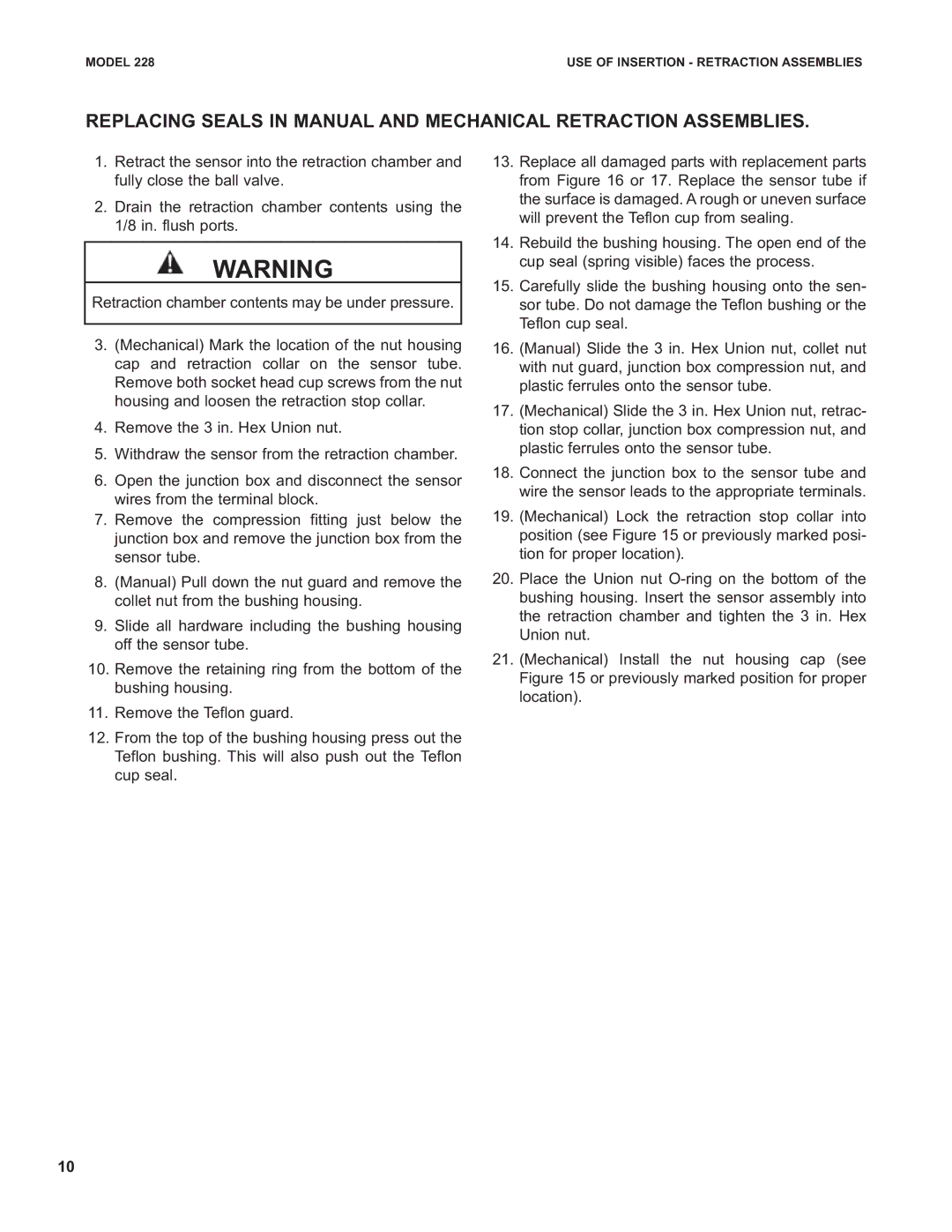228 specifications
The Emerson 228 is a cutting-edge industrial controller designed for demanding applications across various sectors, including manufacturing, oil and gas, and process automation. Known for its robust performance and reliability, the Emerson 228 integrates advanced technologies to streamline operations and enhance productivity.One of the standout features of the Emerson 228 is its modular architecture. This design allows users to customize the controller according to their specific needs by adding or removing modules as required. This flexibility is vital for adapting to changing production environments and scaling operations efficiently.
The Emerson 228 also boasts an intuitive user interface, which simplifies the configuration and monitoring processes. Operators can easily visualize processes through graphical displays, making it possible to diagnose issues quickly and respond in real time. This enhanced visibility significantly reduces downtime and improves overall operational efficiency.
Connectivity is another key characteristic of the Emerson 228. It supports a wide range of communication protocols, including Ethernet/IP, Modbus, and Profibus. This allows seamless integration with existing infrastructure and enables the controller to communicate with various devices, sensors, and other controllers, facilitating a holistic approach to automation.
In terms of performance, the Emerson 228 is designed to handle complex algorithms and data processing tasks with ease. It is equipped with advanced processing capabilities that enable high-speed data collection and analysis. This is particularly important in environments where rapid decision-making is critical to maintain production efficiency and safety.
The Emerson 228 is also built with durability in mind. It features robust construction and is rated for extreme temperatures and harsh conditions, ensuring reliable operation even in challenging environments. This reliability translates to lower maintenance costs and longer service life, making the Emerson 228 a cost-effective solution for businesses.
Energy efficiency is a focal point of the Emerson 228, featuring technologies that optimize power consumption without compromising system performance. This not only reduces operational costs but also supports sustainability initiatives within organizations, contributing to a greener industrial footprint.
In summary, the Emerson 228 stands out as a versatile and powerful industrial controller. Its modular design, user-friendly interface, extensive connectivity options, high processing performance, durability, and energy efficiency make it an ideal choice for modern industrial applications. Organizations looking to enhance their automation capabilities will find the Emerson 228 to be a reliable and effective solution.

